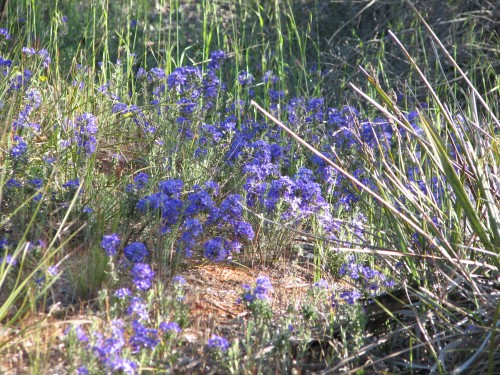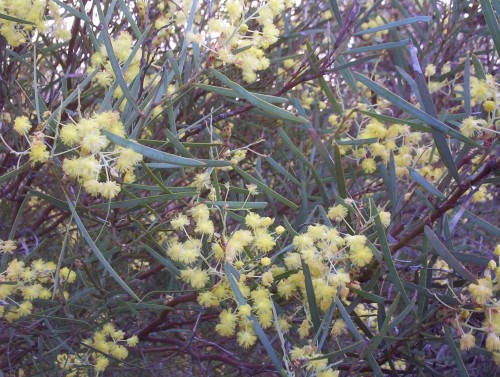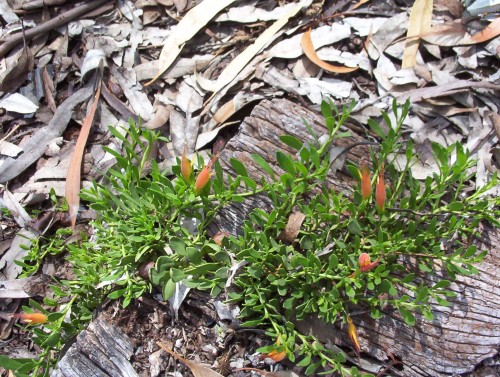Spring flowers: Senecio lautus, a native daisy
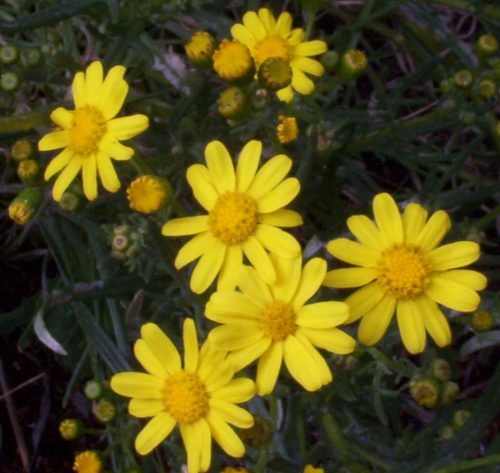
Native daisy Senecio lautus flowering in our small piece of scrub.
Why are you growing weeds? I was a bit taken a back because as far as I knew Senecio lautus was an Australian Native daisy. So what is a definition of a weed?
My understanding is that weeds:
- are introduced species from another continent, usually brought in by people knowingly or unknowingly eg. in the padding in saddles in the ‘olden days’.
- are introduced species which have become escapees from garden environments eg. watsonias and Acacia baileyana in the Adelaide Hills
- native species planted for a specific purpose which have escaped that particular environment
- native species which seed all over the place and take over garden beds. Some people don’t mind this but to others it is a nuisance and the plant is therefore a weed.
Senecio lautus may come into the latter category, but I don’t mind at all. Bring it on, I say. They flower among the mallee trees on our block, come up in pots where I don’t want them, flower prolifically along the South Eastern Freeway on the way to Adelaide and give a glorious glow of warmth on cold cloudy days.
They are easily pulled out if not wanted in a specific location. Some appear to be perennial up to 60-70cm tall, others flower at about 30cm, some require cutting back after flowering to maintain a neat bush. Many just appear to die back and re-shoot when it rains in early winter. I consider them worth having, but of course once you have one seed in the garden you are likely to have them next season whether you want them or not! Find out more about Senecio lautus.
I picked some yesterday morning in an experiment to see if they would last as a cut flower. I hadn’t bothered to try before. I will report back. One thing I did notice is that some flowers closed their petals last night.
Spring Flowering Plants
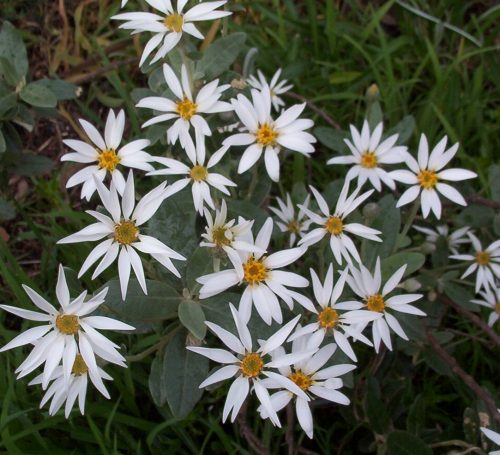
Olearia pannosa beginning to flower in my garden
When I look at the date on the last post made on this blog I am horrified but that is how life is sometimes. I have had to desist growing the large numbers of plants I used to but I cannot resist plants that have cuttings on them so I am always having a go at something, just not on the scale I would like to do.
A friend asked me for photos of a couple of South Australian native plants and that set me thinking about what I might be able to do on the blog. There are a number of posts that need tidying where links have been broken over the years, and probably better photos in my collection now. Spring is a great time to be stimulated to share the wonder of our amazing native plants as many begin to burst into flower in the next few months.
For further information Olearia pannosa.
Dampiera rosmarinifolia
Acacia iteaphylla (Flinders Range Wattle)
This is one of my favourite wattles. I’ve had a hedge of them for over 20 years, and here they are the first to flower, beginning in Autumn. I noticed another hedge of them in the town in good bloom. This uaually means that there hasn’t been much rain here because the blooms spoil in the rain.
Well grown plants reach 3-5m tall by 3-6m wide. They have pale yellow sprays of flowers and can be pruned. It is very adaptable and is drought resistant and lime tolerant. Some forms have pretty new growth, and can be pendulous or upright in growth habit. Use as an ornamental or low windbreak as well as a hedge.
Eremophila glabra ‘Roseworthy’
This is another of those tough glabra forms. This one originates from the Roseworthy district which is north of Adelaide in South Australia, on the road to the Barossa Valley. Many forms of native plants are named for the town or district where they grow and this is particularly so of Eremophilas.
This form of Eremophila glabra is quite flat like a lawn. In fact a well grown plant has the fresh green appearance of lawn and I am sure could be grown as a lawn substitute. It would only be visually like that as it could not be walked on like a lawn. However to have a flat green area is visually cooling even if it is not a true lawn. The plant would be worth growing for that alone. However another benefit is that Honeyeaters love the flowers which vary from yellow to red on the plant when in flower. This is a frost hardy plant also.
